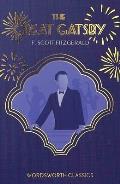This month I welcome award-winning illustrator, and my former neighbor, Craig Orback, for apple pie and a chat about illustrating.

1. Welcome Craig. Your illustrating career is going quite well, are you at a point yet where you can choose projects?
I don’t really get to choose, often it’s an assignment and there’s little choosing. I do on occasion turn down a project because I’m too busy with other projects or if I really don’t like the story, but I rarely do that. I don’t want to disappoint anyone.
This illustrator rarely gets to choose projects.
2. How does an illustrator work with an author? Can you walk me through the process and how involved are writers with the illustrations?
For picture books the publishers tend to keep the author and illustrator separate. An illustrator works with the publisher’s art director who will show initial sketches to the author. But the illustrator must be free to come up with their own ideas.
 3. You’re currently involved with a rather unique project, can you tell me some more about that.
3. You’re currently involved with a rather unique project, can you tell me some more about that.The project is called “Gifts from the Enemy” and is an exciting nonfiction picture book project that I have been working on with bestselling author Trudy Ludwig. Trudy's inspiration for “Gifts from the Enemy” is Alter Wiener, a teen survivor of five prison labor camps during WW II and the author of "From a Name to a Number".
“Gifts from the Enemy” is carefully crafted to educate young readers in an age-appropriate way about the dangers of hatred, stereotyping, and prejudice. It’s also a story of hope for anyone who has ever been devalued or treated poorly by others—not for what they’ve done but simply for being who they are. The cool thing about this children's book is that it also includes a brief history overview, vocabulary, discussion questions, AND activities to promote social justice and kindness in kids!
Trudy found me through an extensive search of the SCBWI Northwest site. She wanted just the right illustrator and someone in either Oregon or Washington who might be able to travel to Portland to meet with her and Alter in person.
I had previously illustrated a Holocaust picture book called “Keeping the Promise”, about ten years ago, and I always wanted to do more. I have an interest in WWII and I also felt I could do a better job now that I have more skills and experience.
Trudy gave me the story and after I read it I had my agent negotiate the contract. By January we were set to go and by March I had the story board, sketches and a working layout. I worked closely with the designer at the publishing company to determine the layout.

I did lots of research, online, at libraries and from the author’s notes before she wrote the picture book.
I had a month to paint two larger paintings for the Kickstart Campaign to fund the production of the book. For that I had to find a model who could stand in for a young Alter. No pictures of his youth have survived the war.
4. How do you manage to get your people to look so realistic and detailed?
I like working with live models. I’ll put the word out on the SCBWI blogs when I need a certain type or look and then I take lots of pictures to work from. For my most recent project “Boys Camp” I took lots of pictures of different boys involved in outdoor activities. It gets pretty chaotic at times.
5. ebooks vs. traditional publishing? How has the growth of ebooks changed how you work?
Ebooks haven’t changed my work at all. If a publisher wants to do an ebook of a book I’ve illustrated they simply buy the digital rights.
6. Paints & a brush, or a computer?
I work traditionally. Most of my work is in oil paints or acrylics but I do use Photoshop to tweak things. Often I have to give digital files so I scan in my work and adjust things like contrast in Photoshop before I send them off.
7. What do you think is the most important thing an illustrator can do to increase their odds of a successful career?
I started out on my own for the first few years and had some success. What really helped me was going to New York to show my portfolio to publishers and leave samples. I go back every few years.
Getting involved with SCBWI helped me learn about the business and the craft, especially at the conferences.
Having an agent helps once you're busy working. An agent can keep you in front of publishers and bring you new assignments.
Also, read your contacts carefully, meet your deadlines and be open to changes.
8. What secret talent do you have, which everyone reading this blog will keep secret, and does it help in your art? Or what is the craziest thing you’ve ever done as research?
I think I’ll take the second question. The craziest thing I’ve done is have my wife wrap me in toilet paper to make me look like a mummy. She took many pictures!

Thanks for stopping by, Craig, and good luck with your current project!

